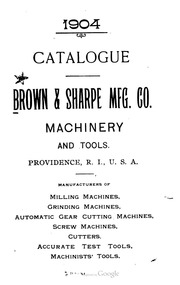- Joined
- Jan 1, 2018
- Messages
- 1,156
I guess they did not like any of my offers, I got this email today
I have to wait 7 days before I can leave negative feedback.
I guess they did not like any of my offers, I got this email today
They seem to be a decent little controller. There are a couple of threads about them at MadModder. One fellow there has modified the firmware. I have one sitting in a box but haven't gotten around to doing anything with it yet. With the pendant, it would be easy to do adhoc grinding jobs.One of these might be an option. I know nothing about them, but look like they would work.
https://www.ebay.com/sch/i.html?_from=R40&_nkw=ddcsv2.1&_sacat=0&LH_TitleDesc=0&_sop=7
I am not sure what the correct suffix is for my #2, maybe a #2B, but that is just a WAG. Mine is not and never has had the auto feed, that is why I am looking to add it electronically.Off your current topic, I have a B&S 2L surface grinder, one of the last ones made in 1946. It has power feeds in both X (table traverse) and Z (in and out cross feed) axes. The spindle is belt drive (126" long belt over 5 pulleys and a counterweight). The power feeds are entirely mechanical, via an incredibly complicated bunch of machinery that still works, driven by a separate flat leather belt.
I found the #2 B&S grinder in the 1904 B&S catalogue
same basic machine, set up for line shaft belt power.
Brown & Sharpe Mfg. Co. : Machinery and Tools : 1904 Catalogue : Brown & Sharpe Manufacturing Co. : Free Download, Borrow, and Streaming : Internet Archive
488 p., illus., 14.0 cm, trade catalogarchive.org
I do not know how much older than 1904 they were making the #2. If you can find the serial number of the machine, I can try to help you with the year of manufacture of your #2. On my 2L the serial number is stamped onto the top of the spindle mounting vertical sliding block, on the right side pad for bolting down the magnetic chuck to the table, and on the right side of the base casting above the access hole. Yours may be different...
There is good information on the #2 on http://vintagemachinery.org/, including several manuals for different vintages of the #2 grinder.
Hope this helps...
Question: What is the vertical thing mounted on the left side of the vertical sliding column of your #2?
Probably just a #2, that was the usual nomenclature for manual #2 grinders.I am not sure what the correct suffix is for my #2, maybe a #2B
What is the serial number? Maybe I can help with that. I stated in post #37 how to find the S/N, at least on my 1946 model 2L.I am curious to know just how old this thing is.
The Serno is 2855.Probably just a #2, that was the usual nomenclature for manual #2 grinders.
What is the serial number? Maybe I can help with that. I stated in post #37 how to find the S/N, at least on my 1946 model 2L.
